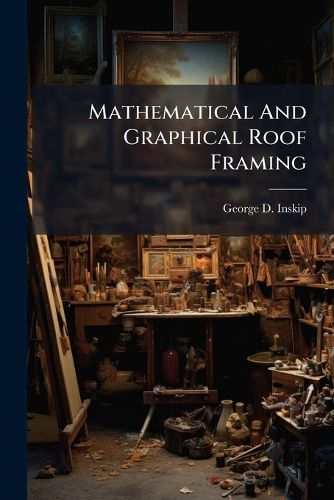Readings Newsletter
Become a Readings Member to make your shopping experience even easier.
Sign in or sign up for free!
You’re not far away from qualifying for FREE standard shipping within Australia
You’ve qualified for FREE standard shipping within Australia
The cart is loading…






Explore the timeless principles of roof framing with "Mathematical And Graphical Roof Framing" by George D. Inskip. This comprehensive guide delves into the mathematical and graphical methods essential for designing and constructing sturdy and aesthetically pleasing roofs. Originally intended for carpenters, builders, and students of architecture, this book provides clear explanations and detailed illustrations that make complex concepts accessible.
From basic geometric principles to advanced framing techniques, Inskip covers a wide range of topics, including calculating angles, determining rafter lengths, and creating precise layouts. Whether you're a seasoned professional or a novice learner, this book offers valuable insights into the art and science of roof framing. Discover the enduring appeal of traditional methods and elevate your craftsmanship with this invaluable resource.
This work has been selected by scholars as being culturally important, and is part of the knowledge base of civilization as we know it. This work was reproduced from the original artifact, and remains as true to the original work as possible. Therefore, you will see the original copyright references, library stamps (as most of these works have been housed in our most important libraries around the world), and other notations in the work.
This work is in the public domain in the United States of America, and possibly other nations. Within the United States, you may freely copy and distribute this work, as no entity (individual or corporate) has a copyright on the body of the work.
As a reproduction of a historical artifact, this work may contain missing or blurred pages, poor pictures, errant marks, etc. Scholars believe, and we concur, that this work is important enough to be preserved, reproduced, and made generally available to the public. We appreciate your support of the preservation process, and thank you for being an important part of keeping this knowledge alive and relevant.
$9.00 standard shipping within Australia
FREE standard shipping within Australia for orders over $100.00
Express & International shipping calculated at checkout
Explore the timeless principles of roof framing with "Mathematical And Graphical Roof Framing" by George D. Inskip. This comprehensive guide delves into the mathematical and graphical methods essential for designing and constructing sturdy and aesthetically pleasing roofs. Originally intended for carpenters, builders, and students of architecture, this book provides clear explanations and detailed illustrations that make complex concepts accessible.
From basic geometric principles to advanced framing techniques, Inskip covers a wide range of topics, including calculating angles, determining rafter lengths, and creating precise layouts. Whether you're a seasoned professional or a novice learner, this book offers valuable insights into the art and science of roof framing. Discover the enduring appeal of traditional methods and elevate your craftsmanship with this invaluable resource.
This work has been selected by scholars as being culturally important, and is part of the knowledge base of civilization as we know it. This work was reproduced from the original artifact, and remains as true to the original work as possible. Therefore, you will see the original copyright references, library stamps (as most of these works have been housed in our most important libraries around the world), and other notations in the work.
This work is in the public domain in the United States of America, and possibly other nations. Within the United States, you may freely copy and distribute this work, as no entity (individual or corporate) has a copyright on the body of the work.
As a reproduction of a historical artifact, this work may contain missing or blurred pages, poor pictures, errant marks, etc. Scholars believe, and we concur, that this work is important enough to be preserved, reproduced, and made generally available to the public. We appreciate your support of the preservation process, and thank you for being an important part of keeping this knowledge alive and relevant.